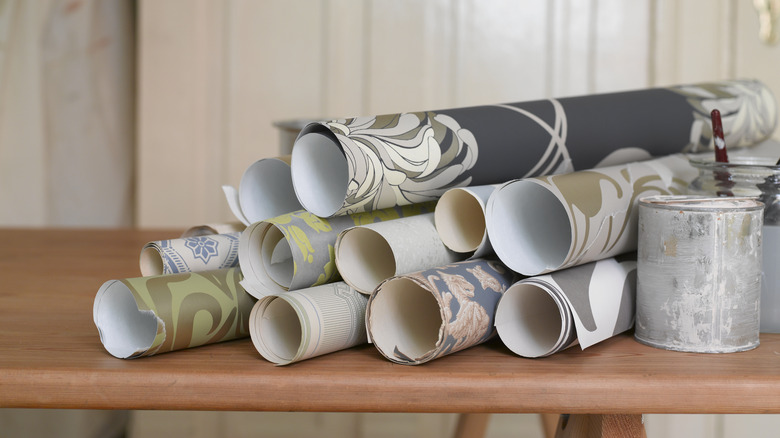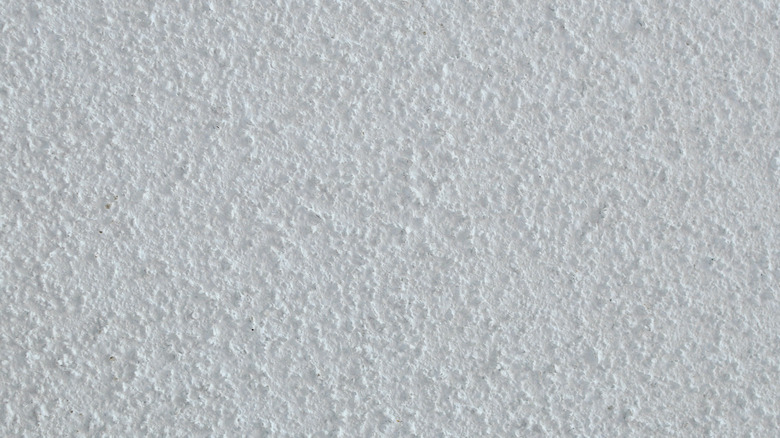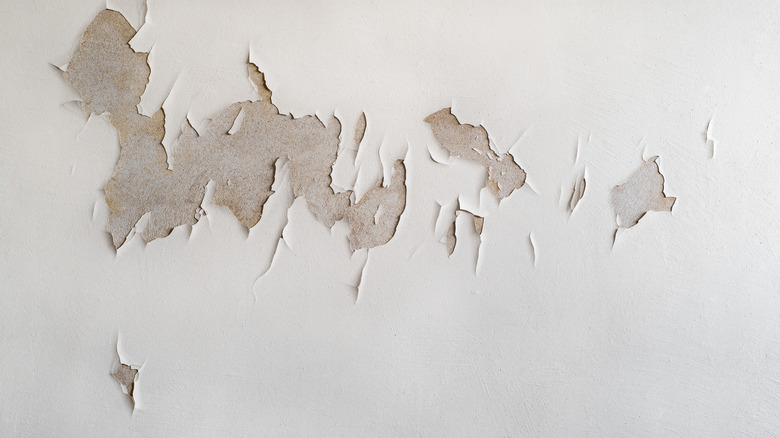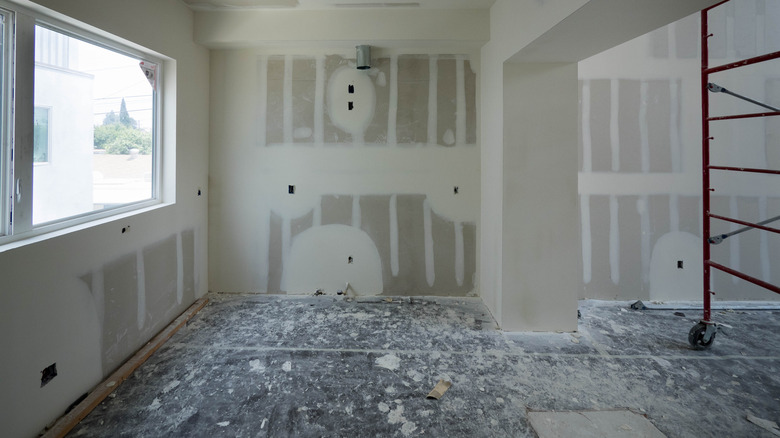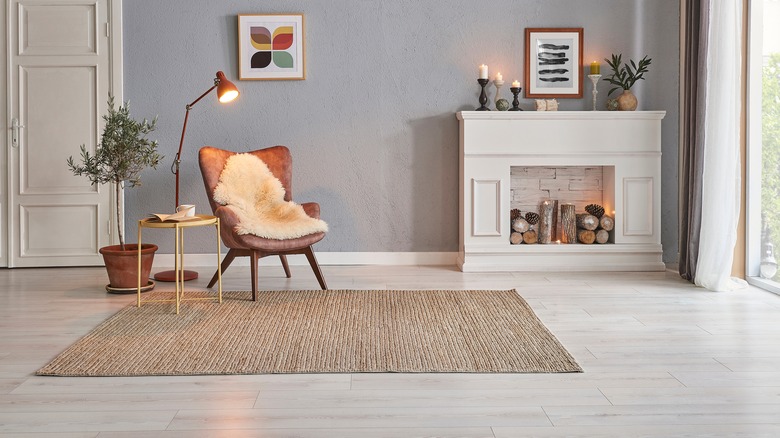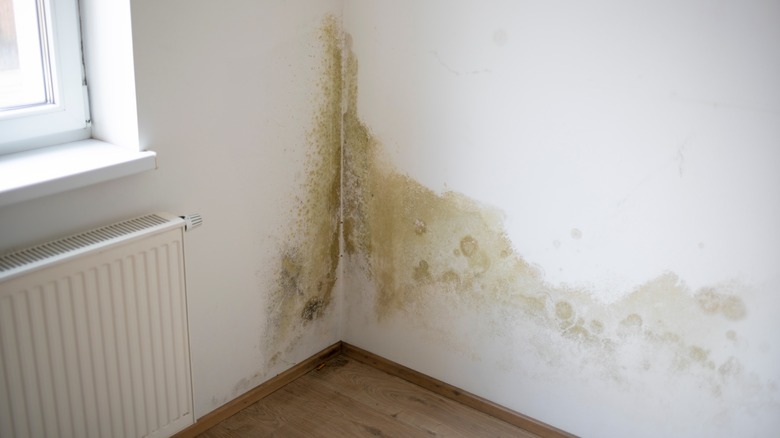Walls It Would Be A Mistake To Add Removable Wallpaper To
We may receive a commission on purchases made from links.
Removable wallpaper, also known as peel-and-stick wallpaper, claims to be renter-friendly, as it's supposed to easily adhere to most walls and come off with little work and no damage. For the most part, this is the case, and this product is quite incredible. Whether renting or owning your space, you may choose this option over more traditional types, as it will simplify and speed up the process.
Besides being easy to apply and remove, another appeal of removable wallpaper is that it's versatile and can be used for several projects. Many DIYers use it to cover a wall, but you could also employ it to revamp tiles, customize a ceiling design, or create large-scale artwork without damaging any surfaces in your home. However, there are some instances when this material should not be used for various reasons. We have listed five types of walls below that you should not apply removable wallpaper, or any type, for that matter, onto.
Textured walls
When trying to install removable wallpaper onto a textured wall, a few problems can arise. The first is that because the surface is rough, adhering to the pattern is bound to be much more difficult. You could struggle with either air bubbles or just an excessive amount of small bumps that take away from the aesthetic you were hoping for. Further, if the wall is sharp (as popcorn walls can be), it may tear the material. Another problem you could face is that there may be gaps behind the wallpaper caused by the texture, which could lead to mold or fungus growth. This is especially an issue in rooms with high humidity, such as bathrooms and laundry rooms.
If you're renting and your walls have texture, it's best to stay away from wallpaper altogether for the above reasons. On the other hand, those who own their home could try to sand down the surface to make it smooth, allowing you to install whatever material you desire.
Flaky walls
Issues could also arise with walls that have flaking drywall paint. This can be caused by a number of things, including incorrect installation or water damage, and it can either happen to large areas, which are much more noticeable, or smaller sections of the surface. If you notice that parts of your wall are coming off, or if your wall doesn't look very smooth, adding removable wallpaper on top is not a good idea. This is because installation is bound to be much more difficult, as your wall will have texture. Additionally, when you go to remove the material, you risk taking off more of the drywall and damaging it further.
To fix a flaky surface, scrape off the material falling off, then wipe with a damp cloth and apply a joint compound. Once dried, sand down the area, wait for it to dry and apply a coat of primer before wallpapering.
Bare walls
If you've recently put up drywall but haven't finished the process, it's best to complete the job before installing removable wallpaper. While it is possible to install the material on this surface and have it look great, it will be much more challenging to put up and also to take it down. It may even be impossible to remove because the wallpaper will adhere too much to the plasterboard or drywall. Further, even if you can get the wallpaper off the wall, it will most likely take some of the drywall with it, damaging your surface. This will also make it impossible to reposition the wallpaper while installing, which could make the process much more nerve-wracking and challenging.
If you have a room with bare drywall or plasterboard walls, apply a primer and make sure it thoroughly dries. This will create a layer between the wall and the wallpaper, making removing it much more manageable.
Matte walls
Like plaster walls, while you can apply wallpaper to matte-painted walls, installing and removing the material will be much more challenging. This is because the wallpaper will stick too much to the flat surface, making removal difficult. If you are somehow able to peel it off, not only will it probably break off pieces of the wall, but it will also strip off the paint, which will force you to repaint the surface.
Instead, if you still want to add a coat of paint, choose a semi-gloss or satin finish type. If you don't care about painting, you can simply apply a primer and let it dry, just like you would do with a bare wall. Additionally, even if you add a coat of a glossy finish, you may still want to apply a primer, as this material is the easiest way to ensure your removable wallpaper will be easy to take off.
Dirty walls
Finally, the last type of wall you should refrain from applying removable wallpaper is those covered in dirt, dust, debris or stains. Of course, if dust or debris is the issue, you should clean the wall before applying. To do so, vacuum the surface and wipe it down with a tack cloth — a 12-pack of these cloths could be purchased from Amazon for $8. It's also important to clean off the baseboards and crown molding, as dust or dirt from these areas could easily adhere to the sticky portion of the wallpaper and keep your surface from looking smooth.
Another issue you should watch for is any mold or mildew growth, which should be treated by cleaning the area with bleach. You should also discover the reason for the excessive moisture because mold could continue to grow behind your wallpaper if the issue isn't dealt with. You may need to add extra ventilation or a dehumidifier to the space, fix any damaged piping, or add insulation around pipes and walls.
